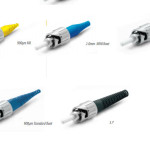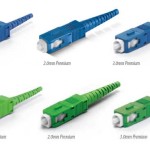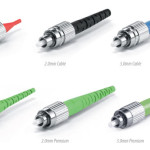Based on Telcordir GR-3155. Microducts are typically small-diameter, flexible, or semi-flexible ducts designed to provide clean, continuous, low-friction paths for installing optical cables that have relatively low pulling tension limits. The microducts are compatible with existing construction designs and building configurations for both riser- and plenum-rated applications, including cable blowing apparatus.
Allow cables to be safely deployed through pull lines or strings using less than 50 lbs of force, and through cable blowing techniques at typical deployment speeds of 100-200 feet per minute.
Microducts are small ducts for the installation of small microduct fibre optic cables. They have a size ranging from typically 3 to 16 mm and are installed as bundles in larger ducts.
GR-3155 states that the basic types of duct are smoothwall, corrugated, and ribbed. The selection of a particular duct design is dependent on those characteristics that are important to the end-user. The need for a specific characteristic or combination of characteristics such as pulling strength, flexibility, or the lowest coefficient of friction will dictate the type of duct required.
With microduct cabling, bundles of small microducts are installed in larger protective ducts [1] [2]. This can be done by jetting for example. Bundles of microducts can also be factory pre-installed. The microducts can be branched very easily in the network. At any place of choice, a window cut is made in the protective duct and the microduct of choice is cut. This microduct is then connected, using a simple push/pull connector, to a microduct that branches to the desired location. After all connections are made, an individual microduct path has been created in the network. A microduct cable can then be jetted through the microduct, without the need to make a splice.
Advantages over traditional cabling
- A branch can be made simply, any place, at any time.
- Low initial costs.
- The network can grow on demand.
- Easy to install microduct routes in occupied ducts.
- Easy to replace old cables through the network.
- Possibility to migrate from copper balanced cables to fibre optic cables
From Wikipedia









